Bee-friendly gardens make people happy! Whether your preference is a tranquil sanctuary from a chaotic world, an eye-catching palette of saturated color, or a hard-working fruit and vegetable garden, plants that attract bees make your garden productive and sustainable. And a carefully selected assortment of perennial flowers that attract bees ensures that your garden will remain bee-friendly year after year.
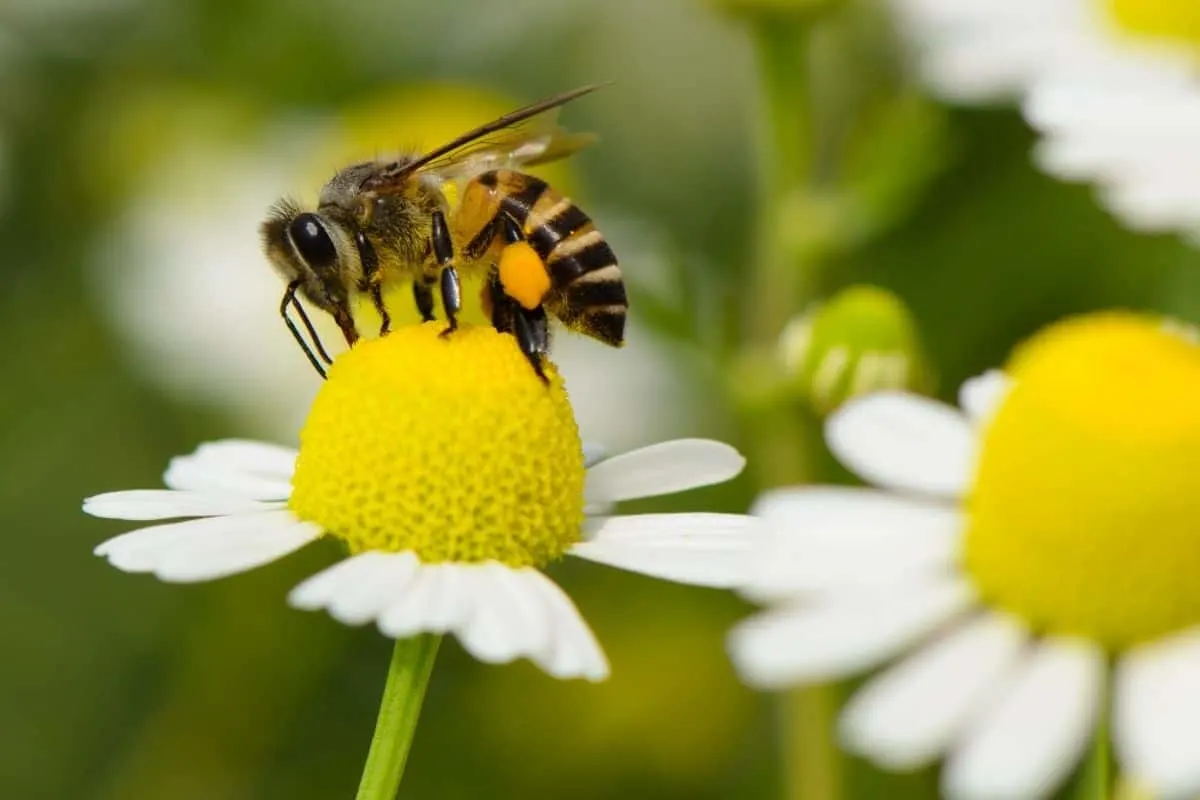
If you are an edible gardener, bees will increase yields and ensure that your plants generate larger, earlier, fruits and vegetables. If you are a landscape gardener, you will benefit from bees as the world’s most prolific pollinators. Bees help perennial plants become generational plants that always grow in your garden.
And no matter what your objective in gardening, bees make your garden a vital part of the global food chain. Over 70% of food plants depend on bees to pollinate at a rate that sustains food production. The bees you provide sustenance in your backyard can also contribute to the production of food elsewhere.
No matter where you live, south of the Arctic Circle, there are perennial flowers that attract bees that are perfectly matched to your soil, your climate, and your sun and wind exposure. Here are 50 possibilities for your bee-friendly landscape.
Perennial Flowers to Keep Bees Nourished Throughout Your Growing Season
Scientists have discovered that a diversity of perennial flowers ensures a variety of bees – domesticated honeybees, wild honeybees, and solitary bees like bumblebees and carpenter bees. The more flowers you plant in your landscape, and the more kinds of flowering perennials you plant in your landscape, the more confident you can be that bees will always be around to pollinate your plants.
One of the ways that a variety of blooming perennial plants makes a difference for bees is by providing pollen and nectar throughout the growing season. Consider planting one or more blooming perennials in your bee garden for every season of the year.
The abbreviation spp. refers to “species” This means there are multiple species of perennial flowers that attract bees in the genus, the first word of the botanical name.
2 Spring-blooming plants for bees
1. Bellflower (Campanula spp.)
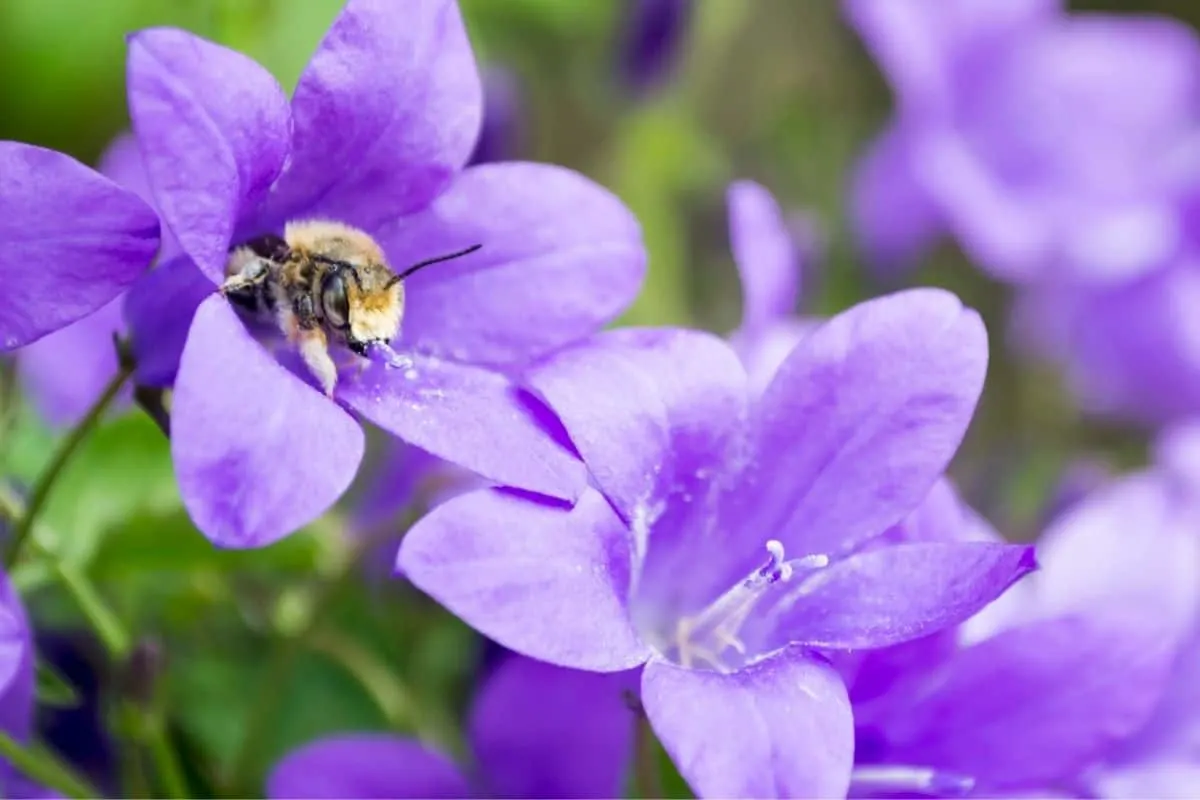
Bellflowers are late-spring bloomers that come in varieties that survive almost as far north as the Arctic Circle (USDA Hardiness Zone 2) to varieties that bask in near-tropical heat (Zone 10).
The bellflowers of the far north may only grow 5 inches tall (about 13 cm), but bellflowers in milder climates grow to heights of 5 to 7 feet. All species of bellflowers are inviting to honeybees, but they are especially attractive to solitary bees such as bumblebees and carpenter bees.
2. Honeysuckle (Lonicera spp.)
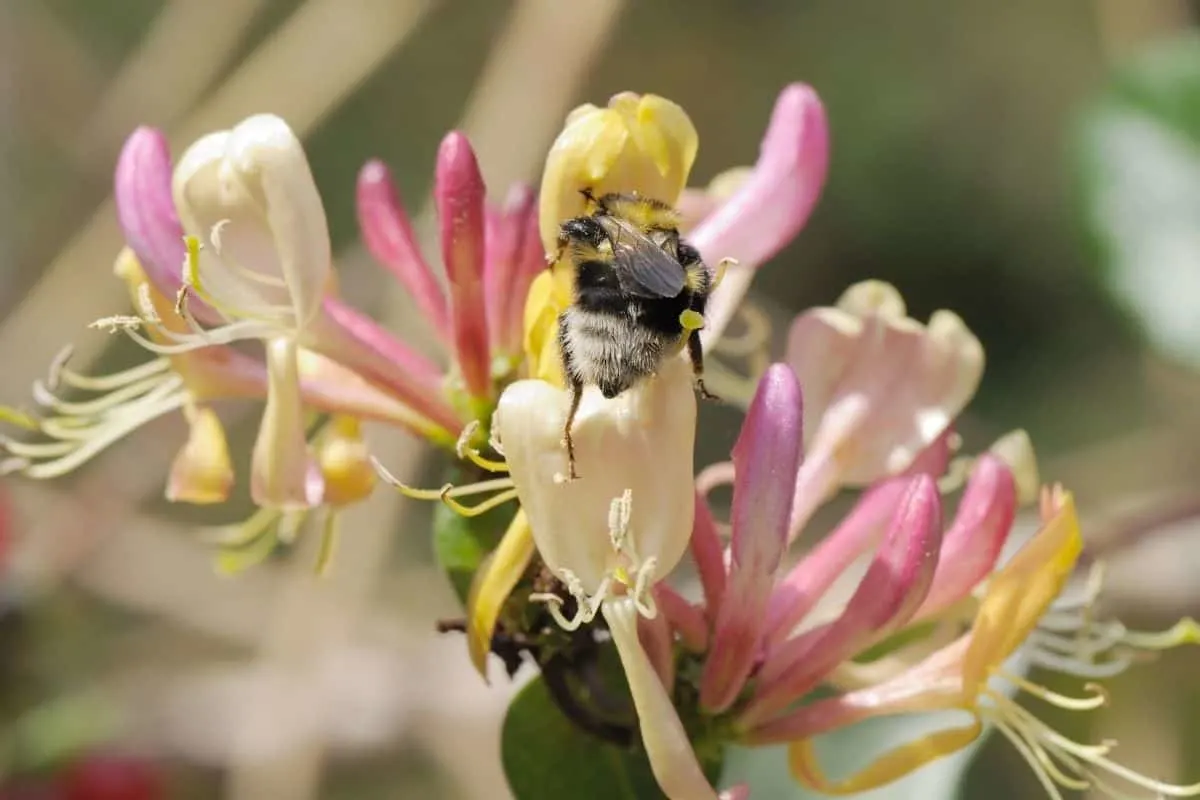
The sweet nectar of honeysuckle blossoms is a favorite food of bees, butterflies, moths, hummingbirds, and children. Bees can’t stick their tongues all the way to the base of a honeysuckle flower, but they can still feed on the nectar and pollen that spills along the sides of the flower.
Honeysuckles aren’t hard to grow (here’s how to grow honeysuckle) In fact, they tend to become invasive. Honeysuckles are winter-hardy from USDA Hardiness Zones 4 through 10, depending on the variety.
6 Summer-blooming plants for bees
3. Anise hyssop (Agastache foeniculum)
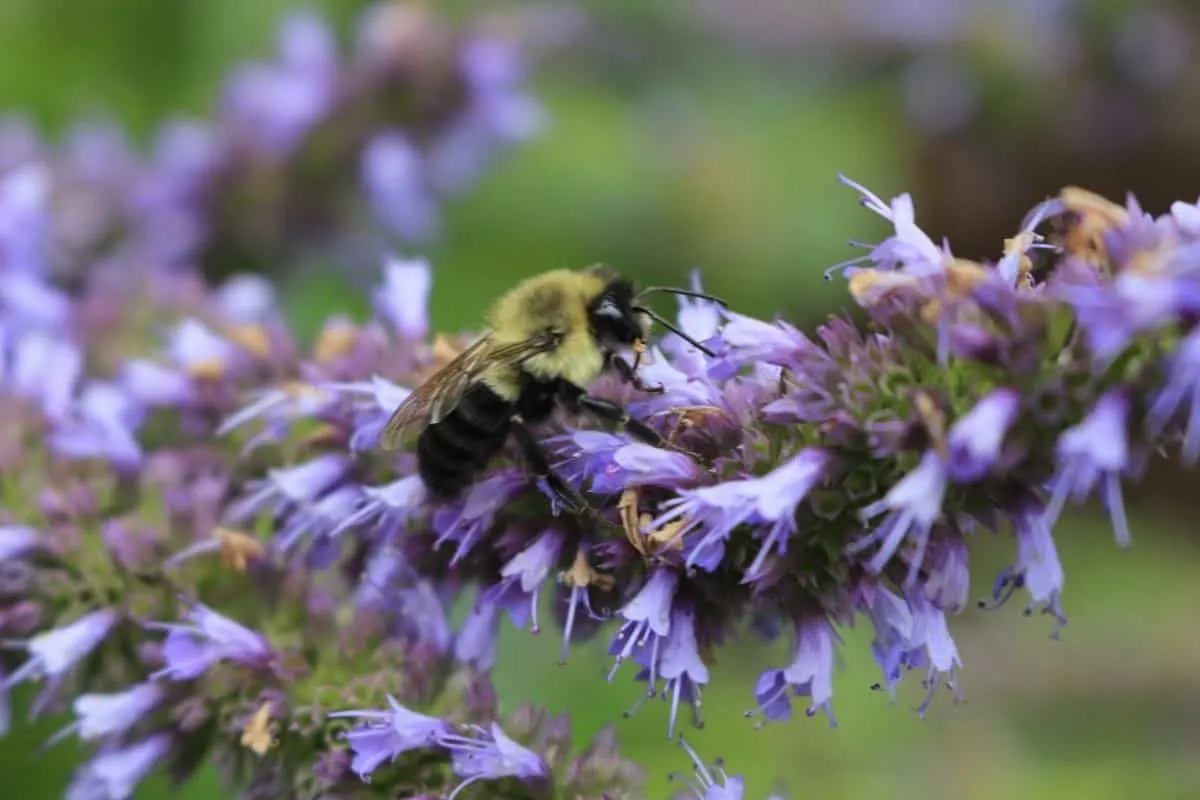
Anise hyssop, also known as blue giant hyssop, is a native plant of the north-central United States and south-central Canada, hardy in Zones 4 through 9.
It attracts both honeybees, carpenter bees, and bumblebees, as well as hummingbirds, butterflies, and night-flying moths. This member of the mint family has a long flowering season and is often covered with bees from dawn to dusk.
4. Astilbe (Astilbe spp.)
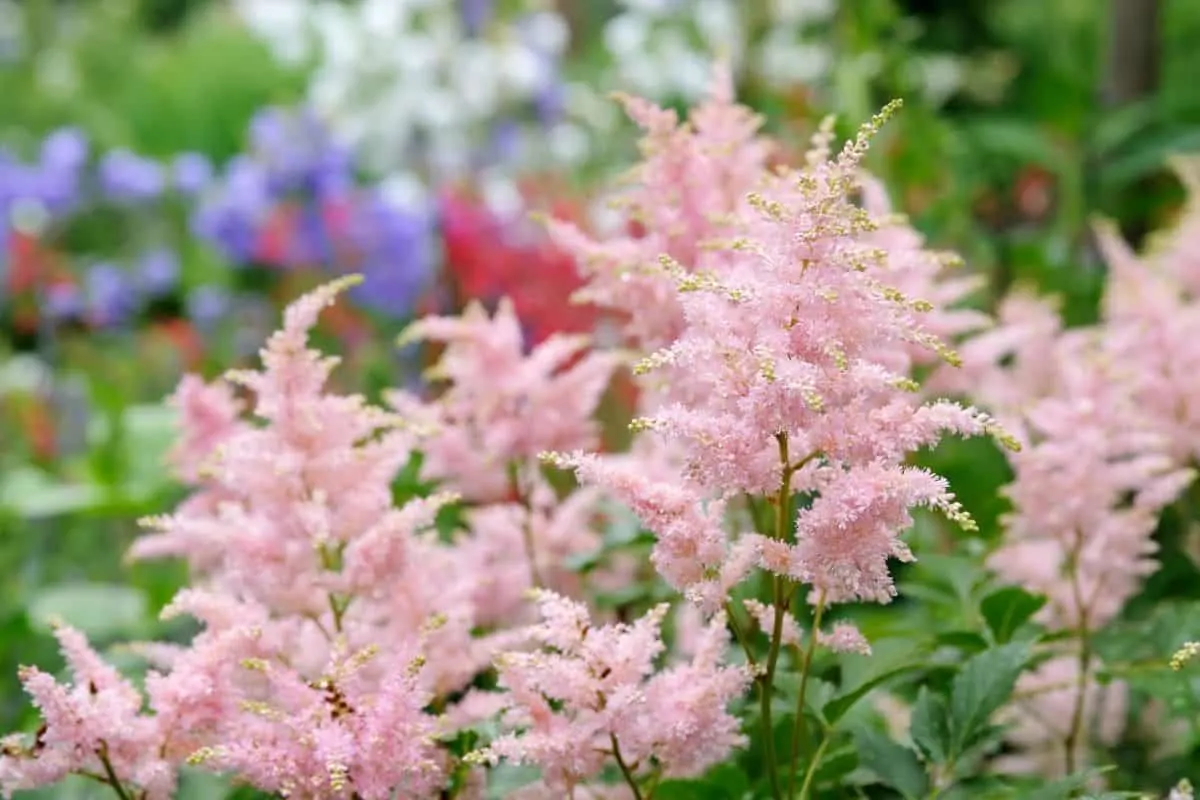
This hardy, herbaceous perennial, also known as false goat’s beard or false spirea, offers dense, fern-like foliage topped by feathery plumes of purple flowers. It is well-adapted to shade and waterlogged soils and is a good choice for pond-side planting. The purple flowers attract bumblebees and are also attractive to honey bees, flower flies, and moths. Astilbe is winter-hardy in Zones 3 through 8.
5. Bee Balm (Monarda spp.)
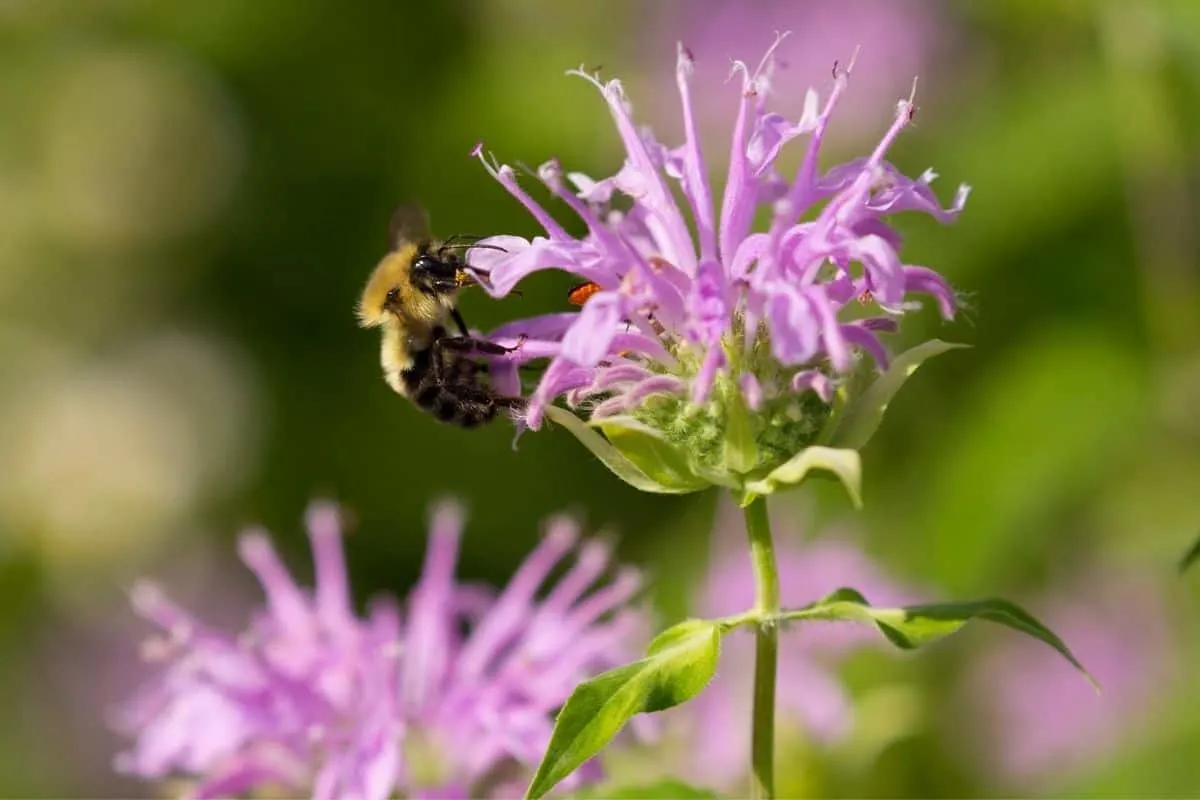
There are over 50 hybrids of bee balm in brilliant colors that attract honeybees and bumblebees alike. It also attracts hummingbirds and beneficial insects. Bee balm prefers moist, well-drained soil in full sun. It will grow in partial shade but spread out and produce fewer flowers. Bee balm is hardy in Zones 3 through 9.
Here’s a list of great bee balm companions.
6. Common Daisy (Bellis perennis)
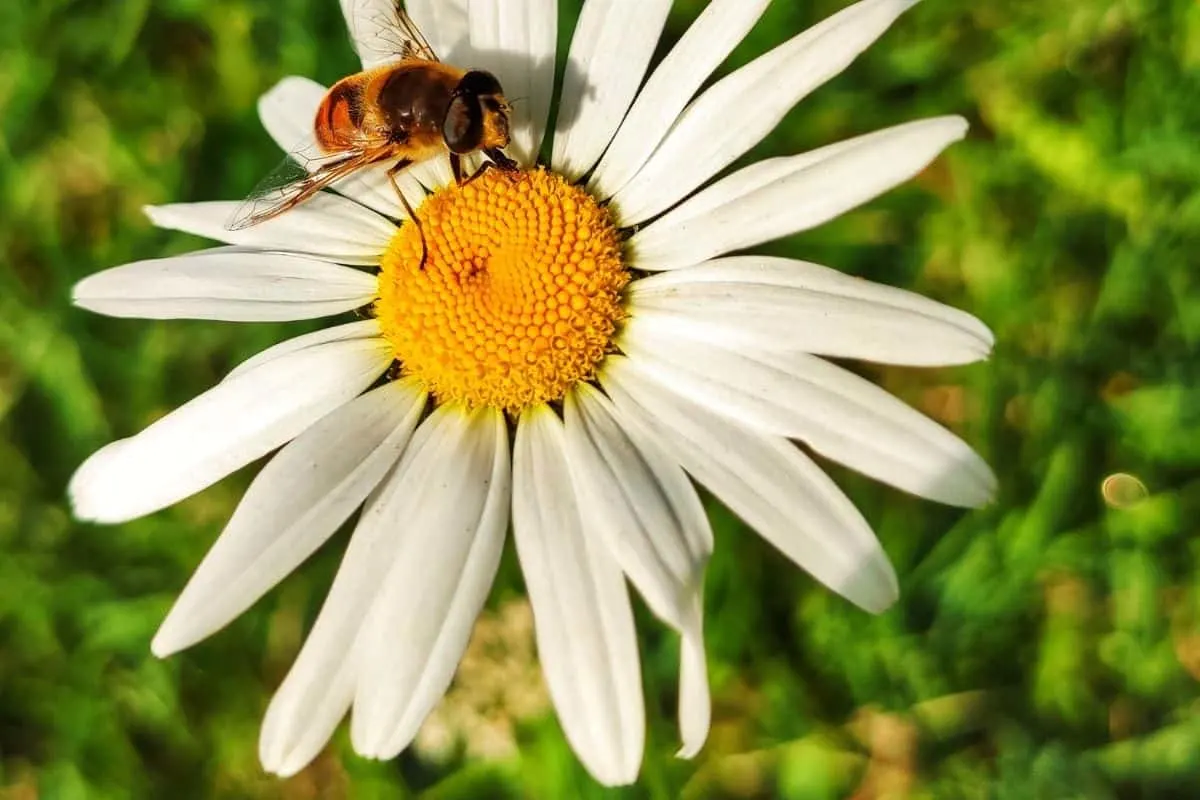
Daisies are reliable bee attractors for the summer garden. They have a long blooming period, and they are extremely easy to grow. They are winter-hardy from Zone 4 to Zone 10.
7. Globe Thistle (Echinops ritro)
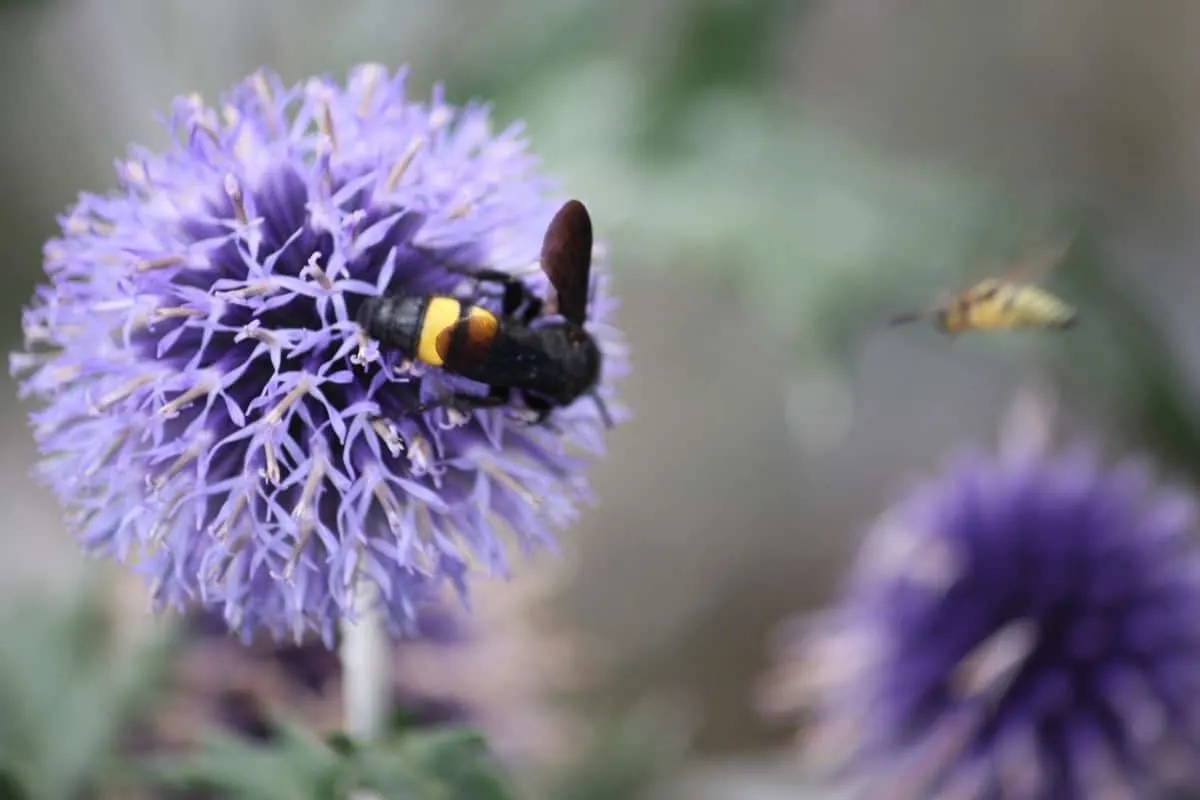
Globe thistles aren’t really thistles. They have rough-looking leaves with deep cuts like thistles, but they don’t have spines. Gardeners prize globe thistles for their purple globe-like flower heads. It is not unusual to see globe thistle flower heads covered with multiple varieties of bees and butterflies throughout the blooming season from mid to late summer. Globe thistles are winter-hardy in Zones 2 through 8.
8. Purple coneflowers (Echinacea spp.)
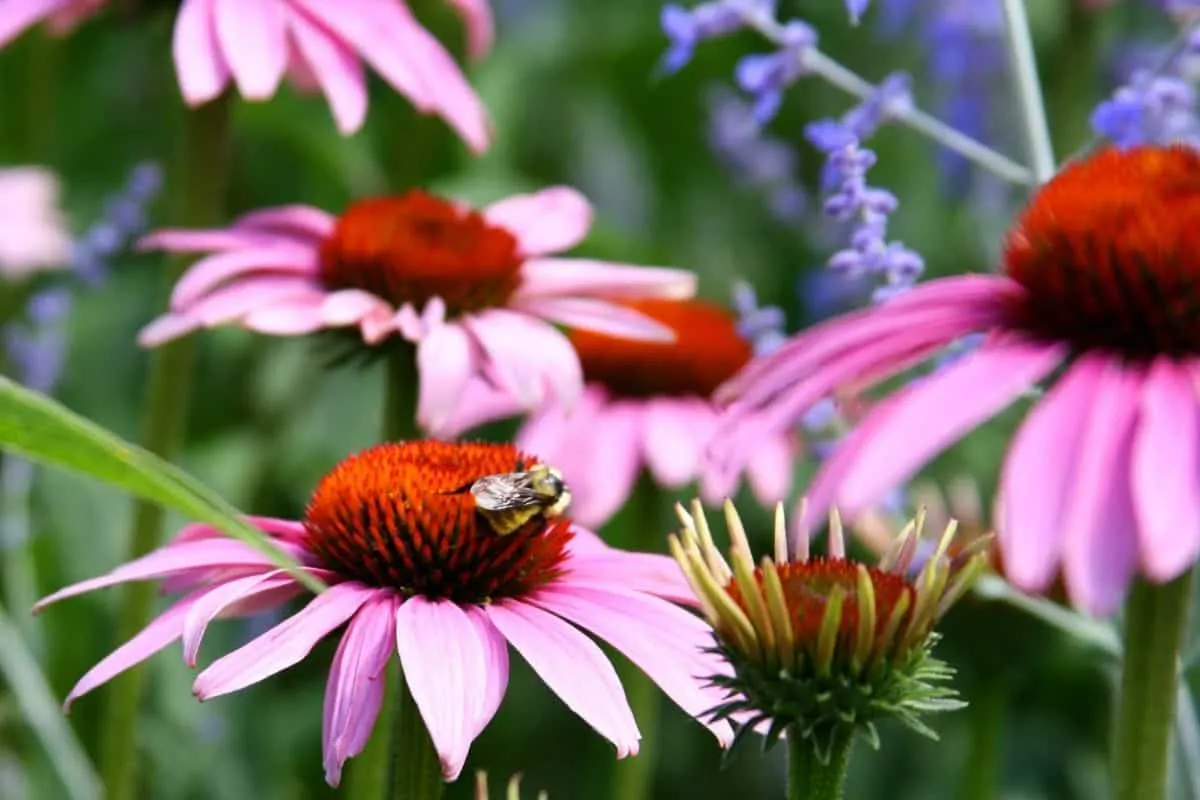
Beautiful and medicinal, purple coneflowers are native prairie plants across the middle of North America. Coneflowers form clumps that can be divided to expand the flower bed in the fall. Bees and birds find them irresistible.
There are varieties of purple coneflowers that can take winter temperatures down to -30 F (about -35° C), but most coneflowers are best suited for USDA Hardiness Zones 5 through 8.
4 Fall-blooming plants for bees
9. Dahlia (Dahlia spp.)

These heat-loving plants from Mexico provide pollen and nectar for bees to make honey for winter. They aren’t perennials unless you garden in USDA Hardiness Zone 8 or a warmer climate, although you will have to cover the ground when the plants die down in the fall if you live in Zones 8 or 9.
10. Goldenrod (Solidago spp.)
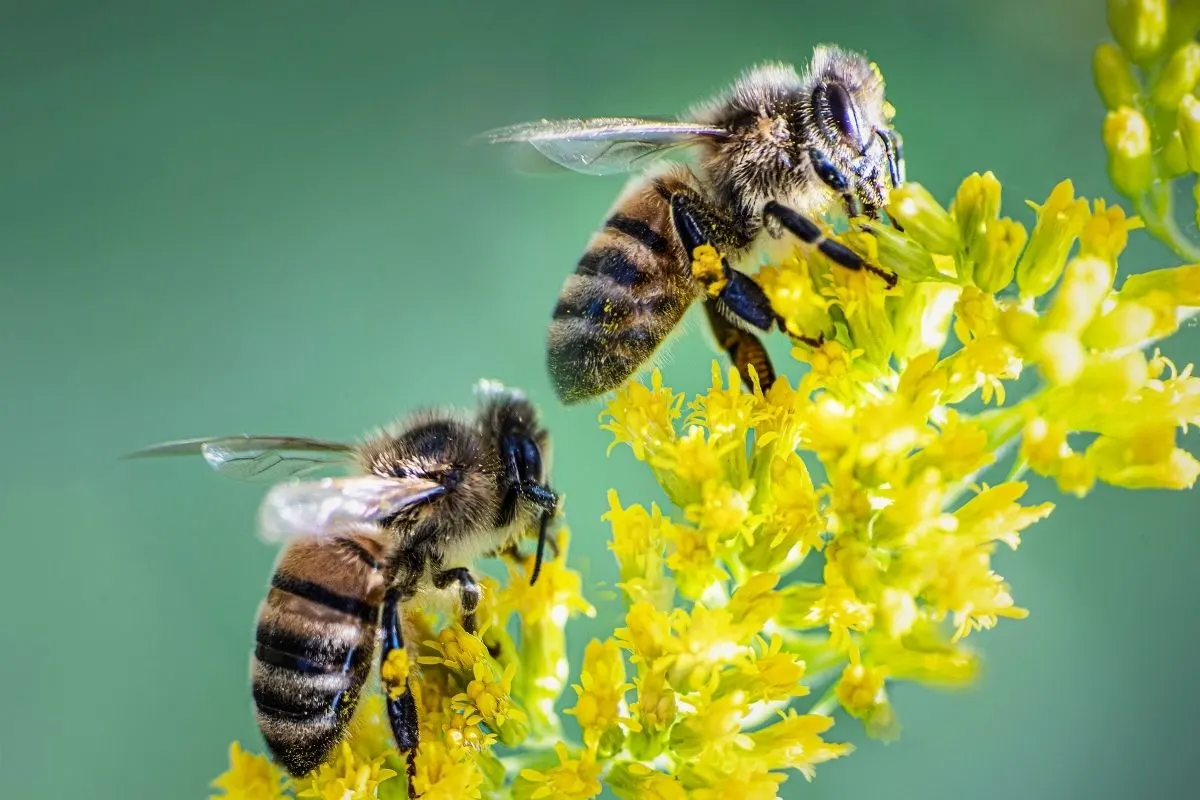
Some gardeners regard this tough perennial plant as a weed, but the truth is that there are dozens of varieties of goldenrod available for landscapers, and most of them don’t cause hay fever. Goldenrod blooms from late summer into the fall, and survives winters in USDA Hardiness Zones 3 through 9.
11. Joe Pye Weed (Eutrochium dubium)
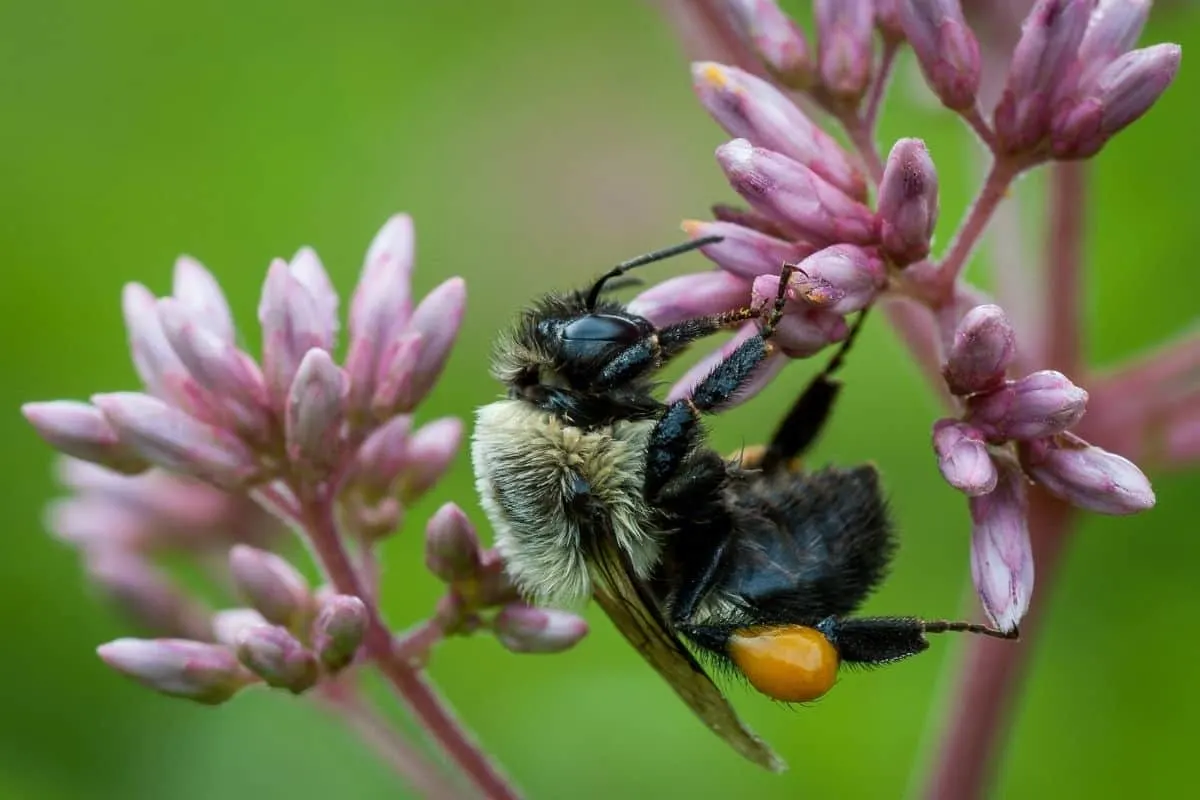
This 6-foot tall fall bloomer is a favorite of both bees and hummingbirds. It grows in sunny or partially shaded, well-watered soil from Hardiness Zone 4 to Hardiness Zone 9, from Nova Scotia to the southern sections of the state of Georgia. Joe Pye weed will feed both bees and the last hummingbirds of the season.
12. Rudbeckias (Rudbeckia spp.)
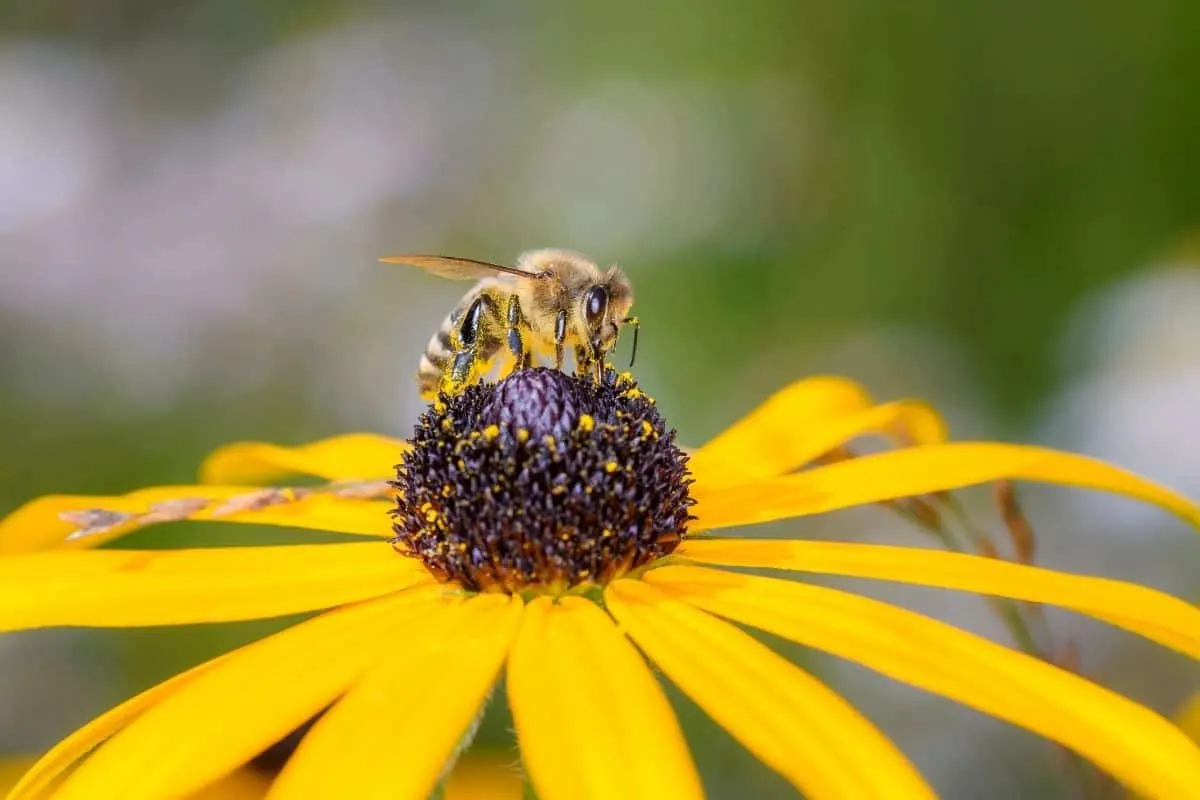
Rudbeckias like Black-Eyed Susans, Gloriosa Daisies, and Yellow Ox Eyes are perennials that are hardy in Zones 4 through 9. They provide pollen for honey bees, bumblebees, and even carpenter bees with their single flowers that bees find easy to navigate. Once rudbeckias go to seed, they will attract winter birds.
Plants for year-round blooms
13. Hardy Geranium (Geranium spp.)
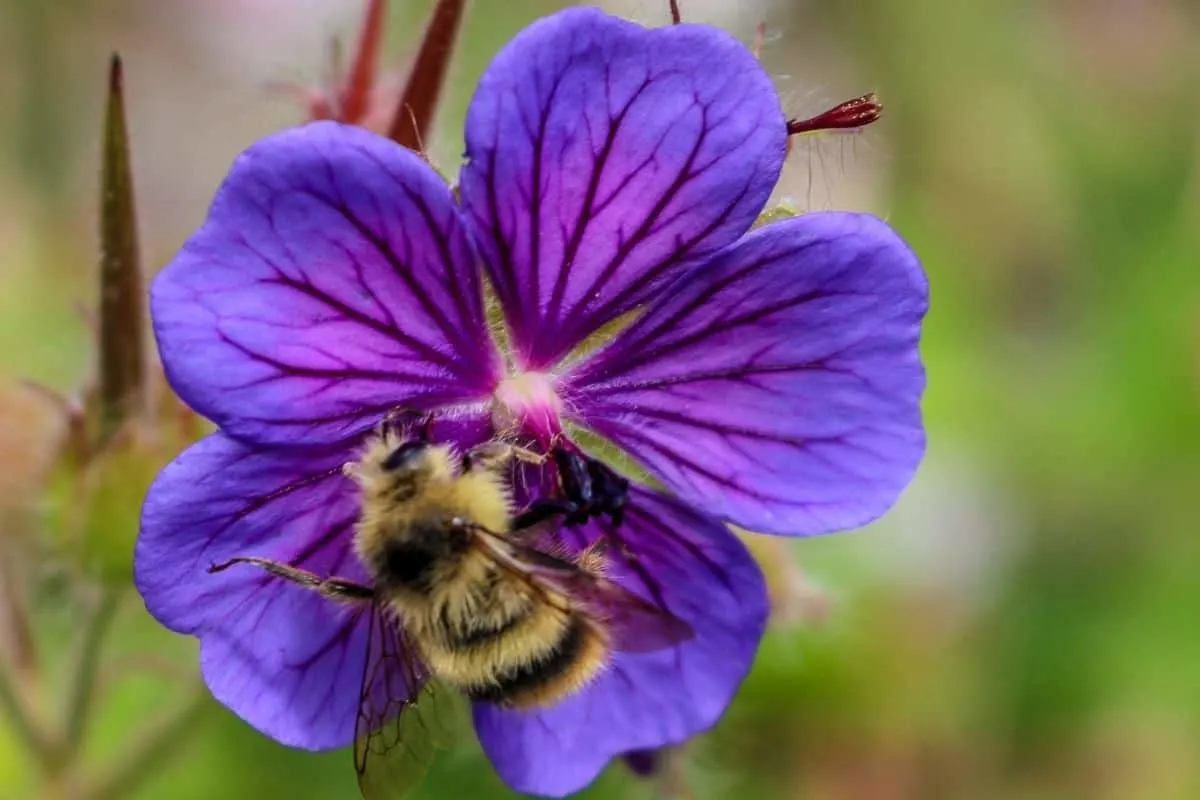
If you want a variety of bees in your garden, plant a variety of geraniums. Low-growing perennial geraniums like the low-growing “striped bloody cranesbill” geranium (Geranium sanguineum var. striatum) provides low growth, dense foliage, and light purple flowers that are particularly attractive to all kinds of bees. The dark purple flowers of the black widow geranium (Geranium phaeum) are especially attractive to bumblebees.
Geraniums are winter-hardy in Zones 10 and 11. In colder climates, they can be dug up and stored in a cool, dry place over the winter, or treated as annuals. But if you can protect geraniums from temperatures below 45° F (8° C), they can feed bees all year round.
These are just a few of the easiest-to-grow, most common perennial flowers that attract bees. But there are many more common garden plants that bees love.
Berries benefit from bees as much as bees benefit from berries
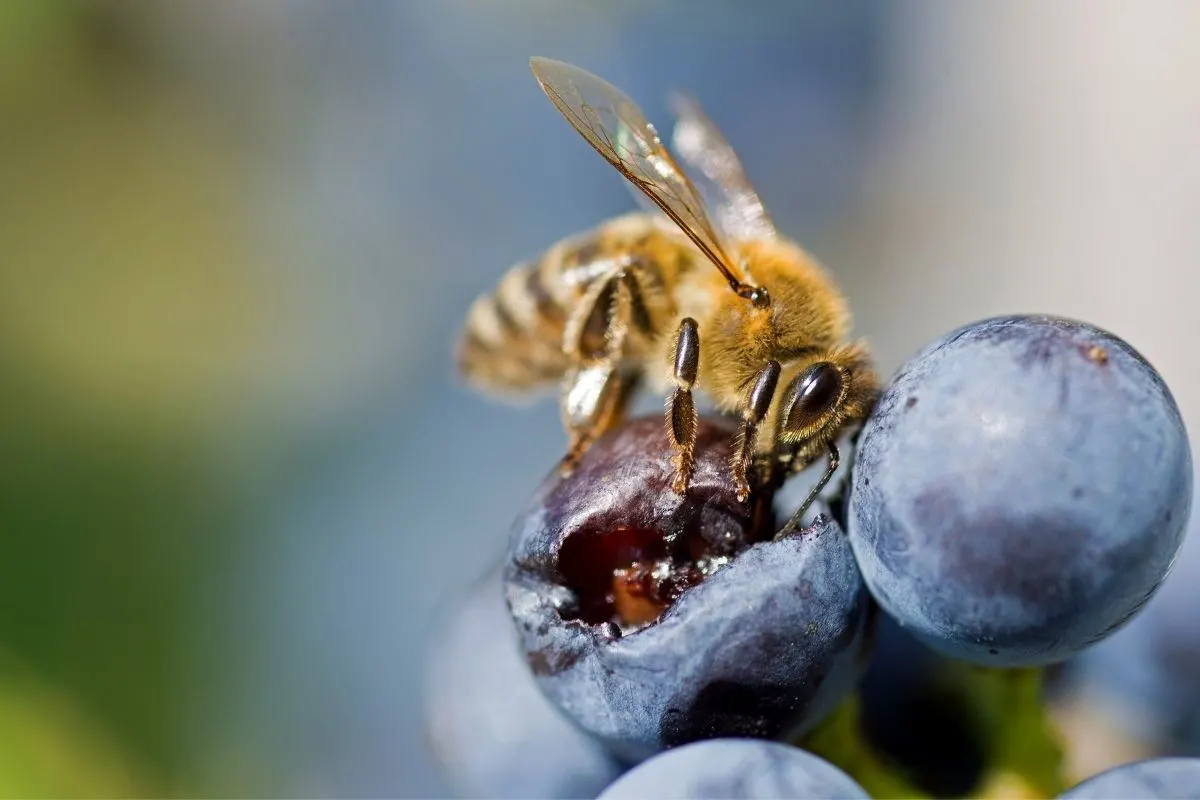
Most perennial berries, such as blackberries, boysenberries (which are actually a cross between raspberries, blackberries, and dewberries), and raspberries (all plants of the genus Rubus) require pollination by insects to reach their full size. That’s because berries are actually aggregate fruits or etaerios that require the pollination of multiple ovaries.
Blueberries (Vaccinium spp.) have a special relationship with bumblebees. They provide pollen and nectar for bumblebees, and bumblebees ensure larger fruit.
Herbs that attract bees
Perennial herbs bloom for weeks at a time. Dozens of blooms on each herb plant can attract bees to your garden from early morning to late afternoon every day. Just a few of the common perennial garden herbs that attract bees include:
- Angelica (Angelica)
- Chives (Allium schoenoprasum)
- Comfrey (Symphytum spp.)
- Fennel (Foeniculum vulgare)
- Hyssop (Hyssopus officinales)
- Lavender (Lavandula spp.)
- Lovage (Levisticum officinalis)
- Mint (Mentha spp.)
- Oregano (Origanum spp.)
- Rosemary (Rosmarinus officinalis)
- Sage (Salvia officinalis)
- Thyme (Thymus spp.)
Sage is an especially useful bee garden plant in the hot, dry-summer climates of Texas and the Southwest. Blooming periodically throughout the summer, sage bushes become bee magnets that keep bees coming to your garden all year long.
All of these herbs can be grown with appropriate winter protection in US Hardiness Zones 4 through 11.
Perennial flowers that attract both bees and beneficial insects
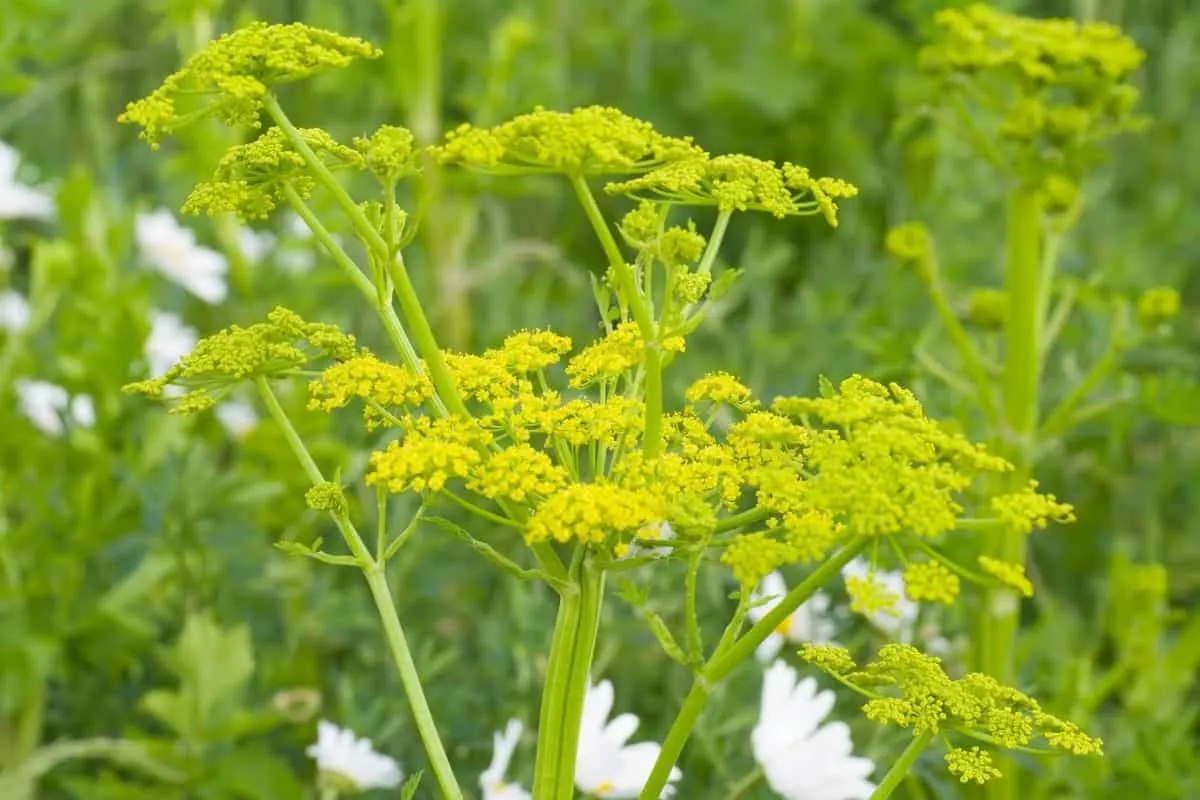
Both vegetable and flower gardens need beneficial insects to keep insect pests under control. Many plants attract both bees and beneficial insects.
- Plants in the Family Apiaceae, which have bunches of leaves at the base of long stems topped by umbels, clusters of flowers, usually attract both bees and beneficials. Many garden vegetables in this family that are harvested and eaten at the end of their first year of growth can also be perennials. These plants of culinary significance include carrots, celery, dill, and lovage. They are beautiful when they are allowed to flower, and will come back the next year to flower again.
- Stone fruits, like peaches, apricots, and cherries in the Family Prunus, attract bees in early spring and support beneficial insects throughout the summer.
- Willows (Salix) and native buckthorns (Rhamnus) provide pollen and nectar for bees as well as homes for assassin bugs, soldier beetles, hoverfly larvae, and parasitic wasps.
Perennial flowers you should NOT plant if you want bees
There are also some kinds of perennial flowering plants that you shouldn’t plant if you want a bee-friendly garden. Certain species of lime trees (Tilia spp.) produce pollen that has a narcotic effect on bees. This leaves them vulnerable to predators.
Azaleas and rhododendrons produce pollen that poisons bees, but that can also poison pets and people. If you or your pet get stung by a bee that has recently fed on azalea or rhododendron pollen, heart problems can result. This can make a bee sting fatal to a pet and disabling to people, even when there is no allergy to bee stings.
Milkweeds (Asclepias spp.) that many gardeners plant to attract and feed monarch butterflies aren’t toxic to bees, but honeybees can get trapped inside their flowers and die.
Weeds in general attract many more pests than bees and should be removed from any bee-friendly garden.
FAQ about perennial flowers that attract bees
What makes a flower bee-friendly?
The flowers a bee prefers depend in part on the length of its tongue. Bees with short tongues prefer shallow flowers like asters, daisies, and sunflowers. Bees with longer tongues prefer tubular flowers like columbine, honeysuckle, and penstemon.
Color also makes a difference. Bees can’t see red. They are attracted to blue, purple, white, yellow, and green flowers.
Bees prefer flowers that have a scent. Many modern flowers have been bred for appearance rather than for an attractive odor. For this reason, bees prefer native plants and “antique” varieties of all kinds of flowers.
Won’t making my garden bee-friendly increase my risk of getting stung?
Bees only sting to defend themselves and their nests. As long as you aren’t encroaching a nest or a hive, and you aren’t in any physical contact with a bee, it is unlikely that any bee will sting you. Male bees don’t have stingers, and many native bees don’t have stingers that are long enough to penetrate human skin.
If you find yourself in the middle of a swarm of bees, stay calm. Don’t slap at the bees or flail your arms at them. This increases the likelihood you will hit a bee and it will sting you in return.
When will bees come to my garden?
Bumblebees are among the earliest garden visitors, sometimes showing up in January and February. Honeybees will arrive when it is warm enough for them to fly, usually 45° to 50° F (7° to 10° C). In the South and Southwest, honeybees forage for nectar and honey almost year-round, whenever plants are blooming. Generally, the smaller the bee, the warmer it needs to be for them to come out.
Are all bees honey bees?
No! There are hundreds of different kinds of wild bees just in North America. They range in size from the Perdita bees, which are about 1/10 inch (2.5 mm) long, to carpenter bees, which are about the size of your thumb. There are 46 species of large, furry bumble bees in North American alone and 250 species worldwide.
Most wild bees don’t live in hives. Squash bees, for example, spend the night in squash blossoms and leave before the honeybees wake up.
Leafcutter bees live in hollow plant stems and carry a dusting of yellow pollen on their bellies. There is even an Adrena or “tickle bee” in the US Northwest and British Columbia, so named because of the sensation of its landing on your skin.
Are there any flowering perennials that do not attract bees?
Bees can see light with wavelengths of 350 to 600 nanometers. This means that they can see blue and ultraviolet colors that humans cannot, but they do not see red. Red roses do not stand out for bees looking for pollen. Antique roses with single petals would appeal to a bee that happened to find them, but modern hybrid teas with double flowers do not. Modern varieties of roses also lack any scent that appeals to bees.
Chrysanthemums reliably produce double flowers every fall, but they do not attract bees because of their low pollen levels and unusual shape. Roses produce double flowers that bees don’t navigate very well, and many of them are red, which bees can’t see.
What smells do bees hate?
There are some scents that humans like but bees find repellent, such as eucalyptus, wintergreen, and peppermint. Oddly, flowering thyme plants attract lots of bees, but the essential oil of thyme repels them.
What color flowers do bees not like?
As mentioned earlier, bees don’t see the color red. They may simply not notice red flowers. On the other hand, blue, dark blue, and purple flowers are extremely attractive to them.
A final thought: Is planting perennial flowers that attract bees enough to make sure they thrive in the garden?
Wild bees need more than pretty flowers to survive:
- Bees need clean water
- They need nesting sites
- They need to be protected from pesticide exposure
Strive to keep your yard chemical-free. Be especially sure to avoid systemic pesticides that can make the whole plant, including the pollen and nectar produced by the flowers, toxic to bees.
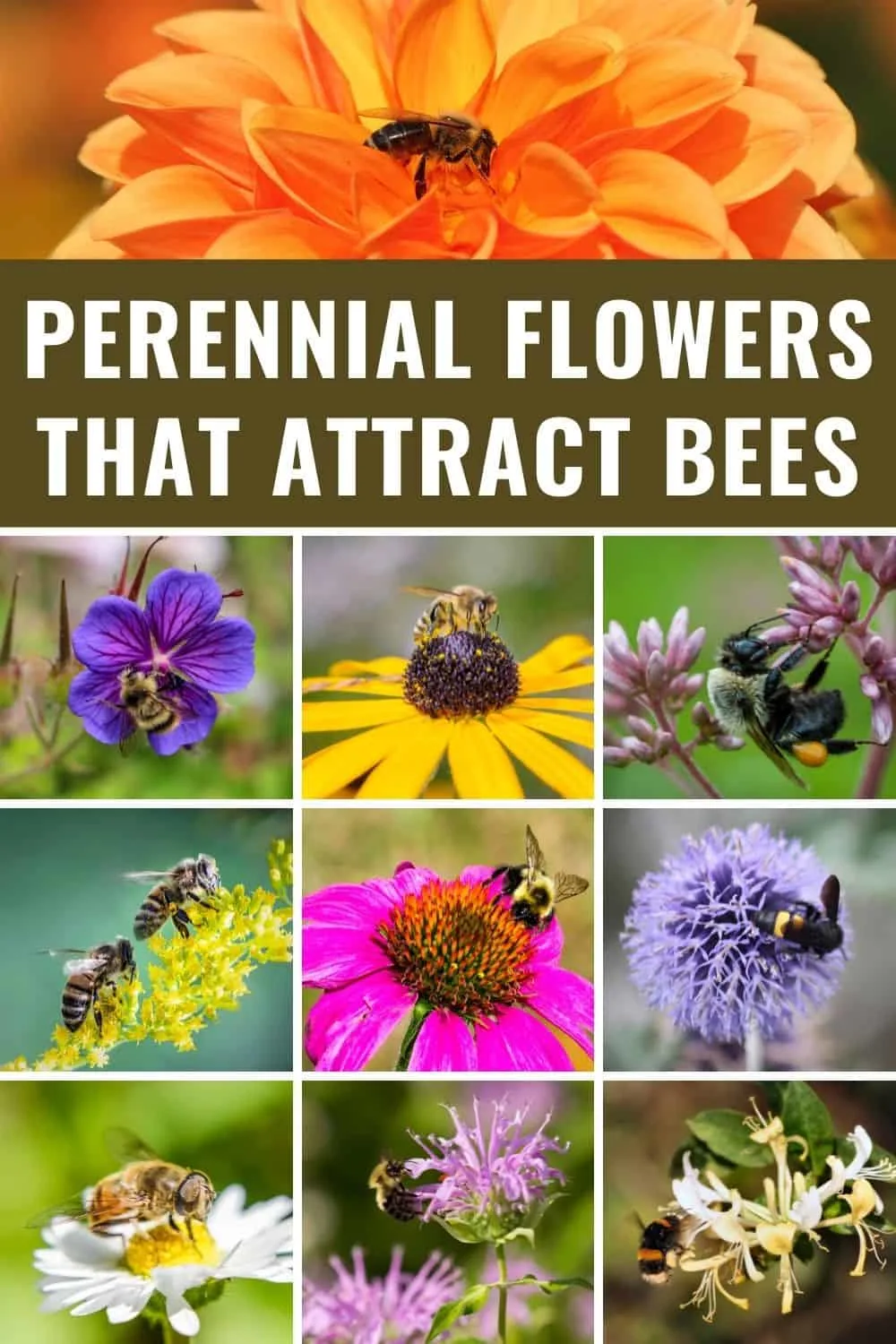
Adriana Copaceanu is a passionate nature lover living in the country on her dream property where she grows vegetables, lavender, and wildflowers that she shares with the wildlife they attract. When she's not in the garden, she loves spending time with her chickens and planning her next nature project. Check out her books below:
How to Grow Lavender for Fun and Profit: Lessons Learned from Planting Three Hundred Lavender Plants

9 Pink Shade Perennials To Liven Up A Shady Garden
Sunday 2nd of April 2023
[…] five petals that are fused at the base, forming a tube-like shape, and have a sweet fragrance that attracts bees and […]
5 Red Shade Perennials For Your Low Light Garden
Friday 31st of March 2023
[…] foliage is deep green and fern-like and the flowers attract pollinators. It prefers moist, well-drained soil and benefits from regular watering and organic […]
21 Gorgeous Companion Plants For Geraniums
Sunday 19th of February 2023
[…] chives are very useful and tasty in the kitchen, they also provide benefits for your geraniums. These plants attract honey bees, butterflies, and many other beneficial insects to your geraniums, making your plants bloom more […]
8 Best Companion Plants For Squash (And 4 To Avoid)
Wednesday 21st of December 2022
[…] for squash will not only not compete with squash plants but will also provide benefits such as attracting pollinators to improve fruit formation, attracting other beneficial insects, reducing pest pressure, and […]
South Dakota Native Plants List: 15 Stunning Garden Flowers
Sunday 30th of October 2022
[…] a great pop of summer color to your garden and will also attract bees and butterflies. It blooms from June to October and likes dry to moist, well-drained soil and full […]